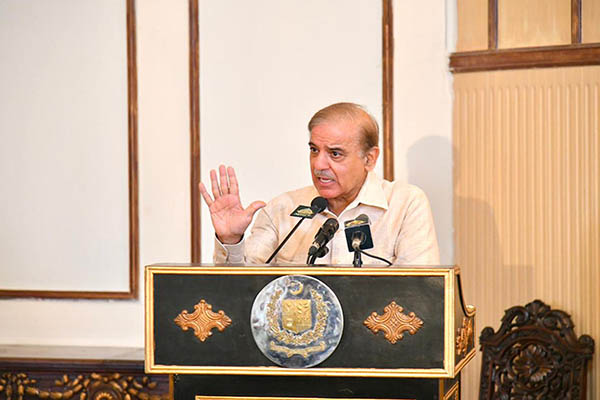
Photo courtesy PID
Pakistan, no stranger to crises, is going through a particularly troubling period, with lawmakers either unable or unwilling to deal with it and a one-man opposition under Imran Khan unwilling to consider any solutions apart from fresh elections. The situation is worsened by last year’s unprecedented floods and an economy on its last legs.
PTI chief Khan lost a parliamentary vote of no-confidence and was ousted from office, the first prime minister to be removed in this manner. His early exit and isolationist rhetoric has boosted his popularity with the voting public; and unleashed polarization in society that Pakistan can ill-afford. Khan’s opponents identify him as a dangerous populist refusing to follow democratic norms, even as his supporters see him as an anti-corruption messiah who was kicked out through a U.S.-backed conspiracy.
Prime Minister Shehbaz Sharif, meanwhile, leads the ruling coalition threatened by Khan and appears completely unable to either tackle the wobbly economy or counter Khan’s prominence, especially as the public perceives him as siding with a military no longer enamored with the PTI chief. The Army’s claims of turning apolitical have also triggered uncertainty as it has yet to make up its mind on how to address the latest dark alley that Pakistan is entering.
Unfortunately, there is little light on the horizon. Between a dithering government and an apathetic Khan, who treats the economy as little more than a rhetorical tool to bash his opponents, the political class has consistently failed to take corrective measures to ensure economic prosperity. As The Economist recently warned: “In the list of unfortunate economies that markets think might soon follow Sri Lanka into debt default and economic crisis, Pakistan sits near the top. It relies heavily on imported food and energy. As commodity prices have soared, its current-account balance has widened and hard currency has drained away. In the past year, Pakistan’s foreign-exchange reserves have shrunk by more than half, to just over $5 billion, a few weeks’ worth of imports. Its currency, the rupee, had lost 24% of its value against the dollar in 2022. Many reckon that a crisis is inevitable.”
